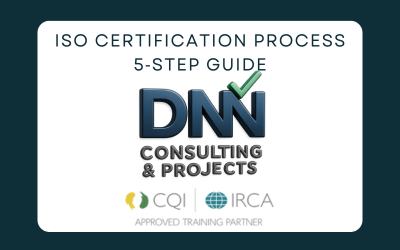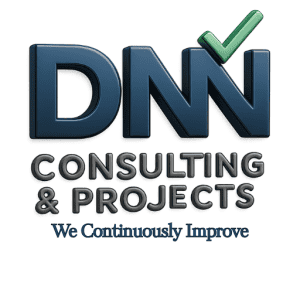One Process, Four Standards
Your 5‑Step Roadmap to ISO Certification
> Implement ISO 9001 (quality), ISO 14001 (environment), ISO 45001 (health & safety) and ISO 27001 (information security) through one lean, proven method. This guide shows African businesses how to prepare, document, audit and pass certification—fast and cost‑effectively.
ROADMAP
Five Steps to ISO Certification
Jump straight to any stage of the process—each button scrolls to the detailed guide.
01
02
03
04
05
STEP 1 : PREPARATION
Lay the Foundation for ISO Success
Appoint an ISO lead, train managers, run a gap analysis and set a clear scope, Smart preparation makes every later step faster and cheaper.

1. Appoint an ISO Lead
Choose someone with enough authority—and the time—to steer the entire ISO project. This “Management Rep” becomes the bridge between top management, department heads, and the external auditor.
- Authority to change processes.
- Acts as project manager
- Communicates with registrar

2. Train Your Managers
Give frontline leaders ISO training so they understand requirements, translate them into tasks, coach their teams, track results, and reinforce process changes until they become routine.
- ISO 101 crash course
- Roles & responsibilities
- Drives team buy‑in

3. Run a Gap Analysis
Systematically compare current processes to each ISO clause, document weaknesses, rate risk, then convert gaps into a prioritized action plan that shapes timelines, budgets, and accountability.
- Map clauses vs current practice
- Identify high‑risk gaps
- Refine project timeline

4. Define Scope & Goals
Decide which sites, products, and functions the certificate should cover, list exclusions, and set measurable objectives that link ISO outcomes to customer satisfaction, compliance, and profit.
- Choose sites & products
- Set measurable objectives
- Document exclusions
STEP 2 : Documentation
This process can be daunting due to the necessity of aligning documents with the technical requirements of the ISO standards
Turn ISO clauses into lean, plain‑language documents that people actually use: policy, objectives, procedures, work instructions, and controlled records—all tailored to your business reality.

1. Draft Quality Policy & Objectives
Distil leadership intent into a one‑page policy, then set measurable objectives that align with customers, compliance duties, and bottom‑line improvement targets.
- Align to corporate strategy
- Define SMART, measurable targets
- Communicate policy company‑wide

2. Build Lean Procedures
Write only the steps, inputs and outputs that matter; combine clauses where it fits your workflow and ditch ISO jargon for everyday shop‑floor language.
- Map tasks to real workflows
- Strip out non‑value steps
- Clarify roles & inputs

3. Create Work Instructions & Forms
Let the people who do the job create step‑by‑step guides, checklists and forms—visual, simple, and mobile‑friendly so adoption happens without nagging.
- Operators draft step guides
- Use photos / flowcharts
- Embed forms in each task

4. Control Documents & Records
Apply version control, approvals and easy retrieval. A good system prevents outdated instructions and captures evidence you’ll need during audits.
- Choose sites & products
- Set measurable objectives
- Document exclusions
STEP 3 : IMPLEMENTATION
Embed ISO Into Everyday Operations
Roll out the new ISO processes, coach every team, and harvest early efficiency gains. Implementation turns documents into daily habits and captures the records auditors will expect.

1. Launch Quality Policy & Awareness
Management announces the quality policy, explains why ISO matters, and links goals to every job, turning a compliance project into a shared mission.
- Town-hall or video intro
- Policy posters / intranet
- Staff Q&A

2. Train Managers & Teams
Department heads receive ISO workshops, translate clauses into local SOPs, mentor staff, and track adoption so the system embeds fast and survives busy seasons.
- Role-specific sessions
- Micro-learning videos
- Feedback loops

3. Deploy Procedures & Improve Processes
Improve ProcessesIntroduce each procedure, let teams white-board their current workflow, remove waste, then lock the improved version into the ISO system as the new normal.
- Kaizen-style mapping
- Eliminate bottlenecks
- Approve revised flow

4. Create Work Instructions & Start Records
Operators document step-by-step guides, fill new checklists, and archive records—building the evidence base auditors will sample during certification and surveillance visits.
- Photo or video guides
- Digital checklists
- Secure record vault
STEP 4: Internal Audit
Audit Yourself Before the Auditor Does
Roll out the new ISO processes, coach every team, and harvest early efficiency gains. Implementation turns documents into daily habits and captures the records auditors will expect.

1. Set Up Audit Program
Build an annual schedule, audit plan, and simple checklists so every process gets checked and improvements feed back into management review and objectives.
- Annual calendar
- Audit checklist
- Reporting template

2. Train & Assign Auditors
Choose impartial staff or outsource experts; teach them ISO clauses, questioning skills, evidence sampling, and how to write findings that drive genuine improvement—not blame.
- Impartial selection
- ISO clause mastery
- Reporting skills

3. Conduct Partial & Full Audits
Start with focused mini-audits during implementation, then perform a full-system audit covering every department before the registrar arrives.
- Mini audits early
- Close NCs fast
- Final full audit

4. Close Non-conformities
Log findings, root-cause analyse, correct, and verify fixes; show objective evidence so certification auditors can clear issues without repeat visits or extra cost.
- NCR log
- Root-cause tools
- Evidence files
STEP 5 : Certification Audit & Beyond
certification!
Pass the two-stage registrar audit, earn the certificate, market it—and keep improving through surveillance audits and measurable business gains.

1. Choose an Accredited Registrar
Short-list IAF-accredited registrars, compare quotes, audit days, industry experience, and pick the partner best aligned with your geography, budget, and growth plans.
- IAF accreditation
- Audit-day quote
- Industry expertise

2. Prepare Staff & Records
Coach teams on what to expect, tidy work areas, verify document versions, and assemble 1-2 months of records that prove every clause is effectively implemented.
- Staff briefing
- Document sweep
- Record sampling

3. Pass Stage 1 & Stage 2 Audits
Stage 1 reviews documents; Stage 2 samples processes. Close any findings quickly, send evidence, and you’ll receive the three-year ISO certificate.
- Stage 1 desk review
- Stage 2 process tour
- Corrective actions

4. Market & Maintain Certification
Announce your win, add the mark to bids, and keep the system alive through internal audits and registrar surveillance every 6-12 months.
- Press release
- Bid templates
- Surveillance calendar
Ready to book your certification audit? Fill in the form.
Contact Us
Alpha Road, Driehoek
Quick Links
- Home
- About Us
- Services
- ISO Process
- Contact Us
- Case Studies
Core Services
- ISO 9001 – Quality
- ISO 14001 – Environment
- ISO 45001 – Health & Safety
- ISO 27001 – Info‑Security
- Gap Analysis & Audit Prep


